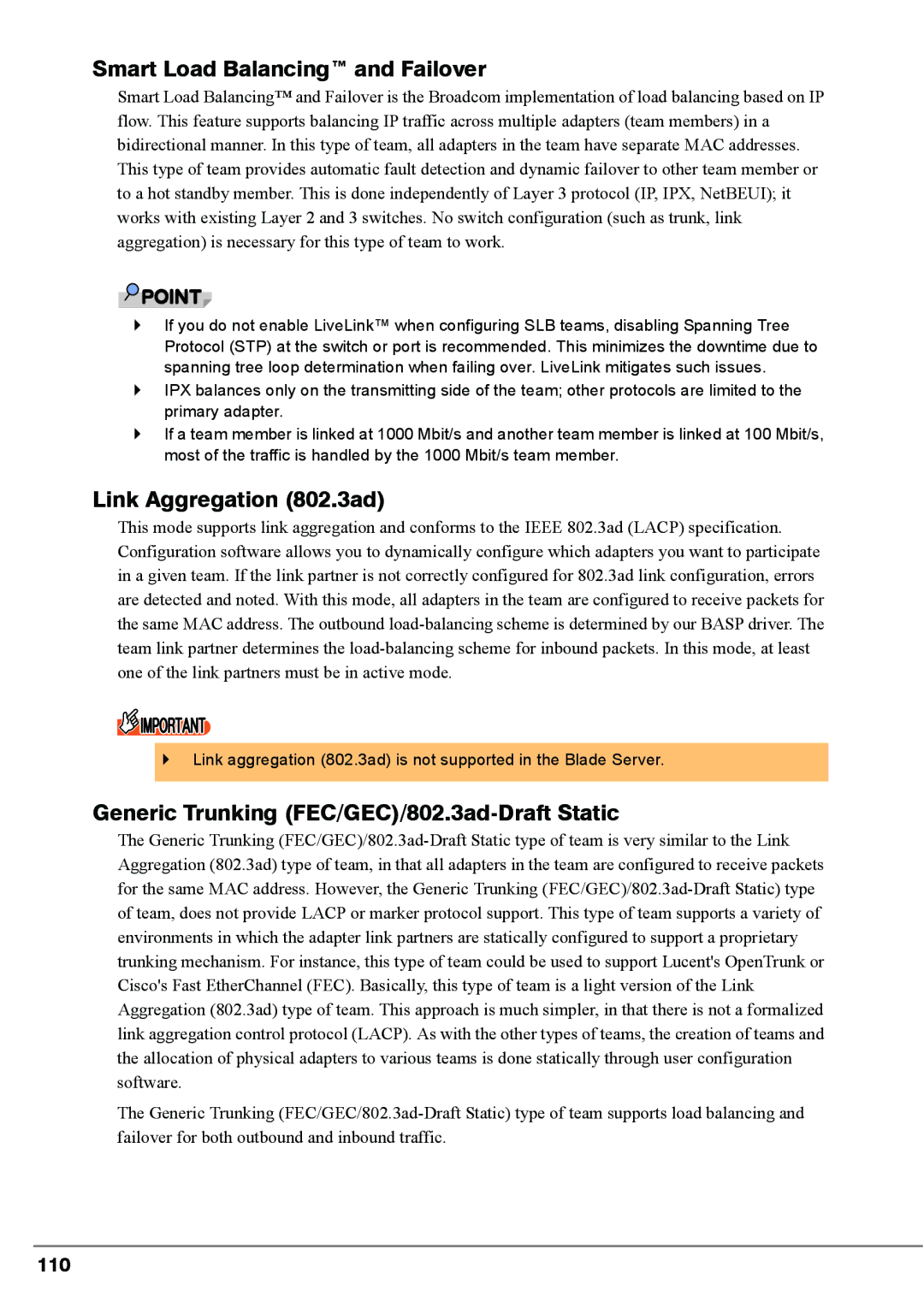
Smart Load Balancing™ and Failover
Smart Load Balancing™ and Failover is the Broadcom implementation of load balancing based on IP flow. This feature supports balancing IP traffic across multiple adapters (team members) in a bidirectional manner. In this type of team, all adapters in the team have separate MAC addresses. This type of team provides automatic fault detection and dynamic failover to other team member or to a hot standby member. This is done independently of Layer 3 protocol (IP, IPX, NetBEUI); it works with existing Layer 2 and 3 switches. No switch configuration (such as trunk, link aggregation) is necessary for this type of team to work.
`If you do not enable LiveLink™ when configuring SLB teams, disabling Spanning Tree Protocol (STP) at the switch or port is recommended. This minimizes the downtime due to spanning tree loop determination when failing over. LiveLink mitigates such issues.
`IPX balances only on the transmitting side of the team; other protocols are limited to the primary adapter.
`If a team member is linked at 1000 Mbit/s and another team member is linked at 100 Mbit/s, most of the traffic is handled by the 1000 Mbit/s team member.
Link Aggregation (802.3ad)
This mode supports link aggregation and conforms to the IEEE 802.3ad (LACP) specification. Configuration software allows you to dynamically configure which adapters you want to participate in a given team. If the link partner is not correctly configured for 802.3ad link configuration, errors are detected and noted. With this mode, all adapters in the team are configured to receive packets for the same MAC address. The outbound
`Link aggregation (802.3ad) is not supported in the Blade Server.
Generic Trunking (FEC/GEC)/802.3ad-Draft Static
The Generic Trunking
The Generic Trunking
